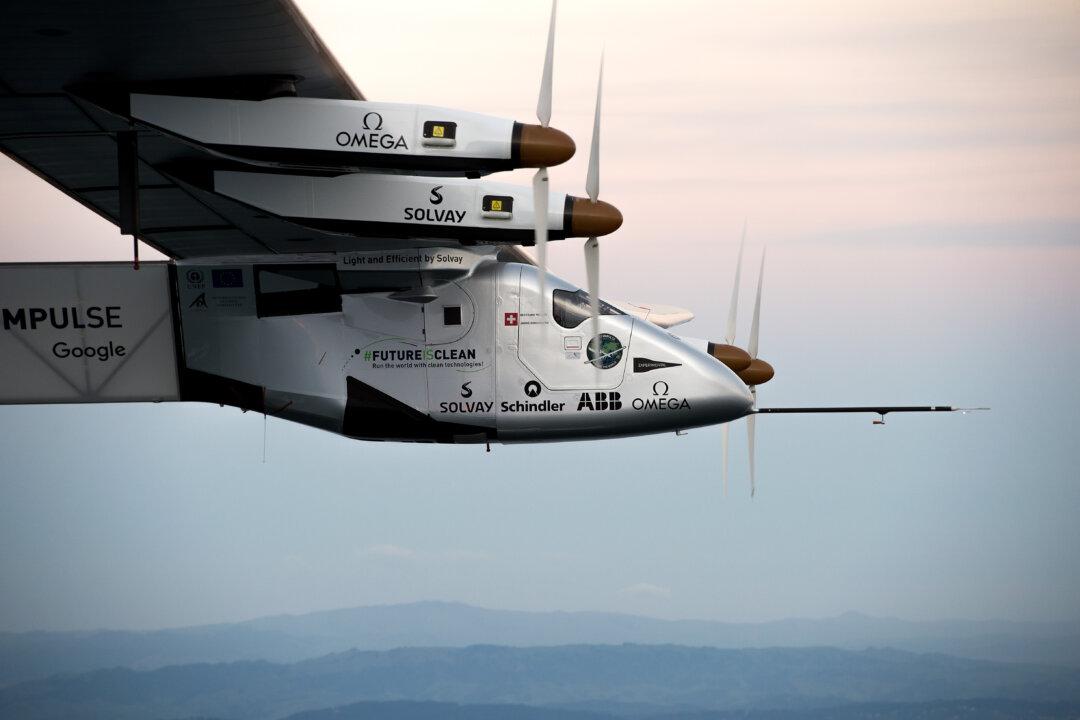SAN FRANCISCO—A solar-powered airplane landed in California on Saturday, completing a risky, three-day flight across the Pacific Ocean as part of its journey around the world.
Pilot Bertrand Piccard landed the Solar Impulse 2 in Mountain View, in the Silicon Valley south of San Francisco, at 11:45 p.m. following a 62-hour, nonstop solo flight without fuel. The plane taxied into a huge tent erected on Moffett Airfield where Piccard was greeted by project’s team.
“You know there was a moment in the night, I was watching the reflection of the moon on the ocean and I was thinking ‘I’m completely alone in this tiny cockpit and I feel completely confident.’ And I was really thankful to life for bringing me this experience,” Piccard said at a news conference after he landed. “It’s maybe this is one of the most fantastic experiences of life I’ve had.”






